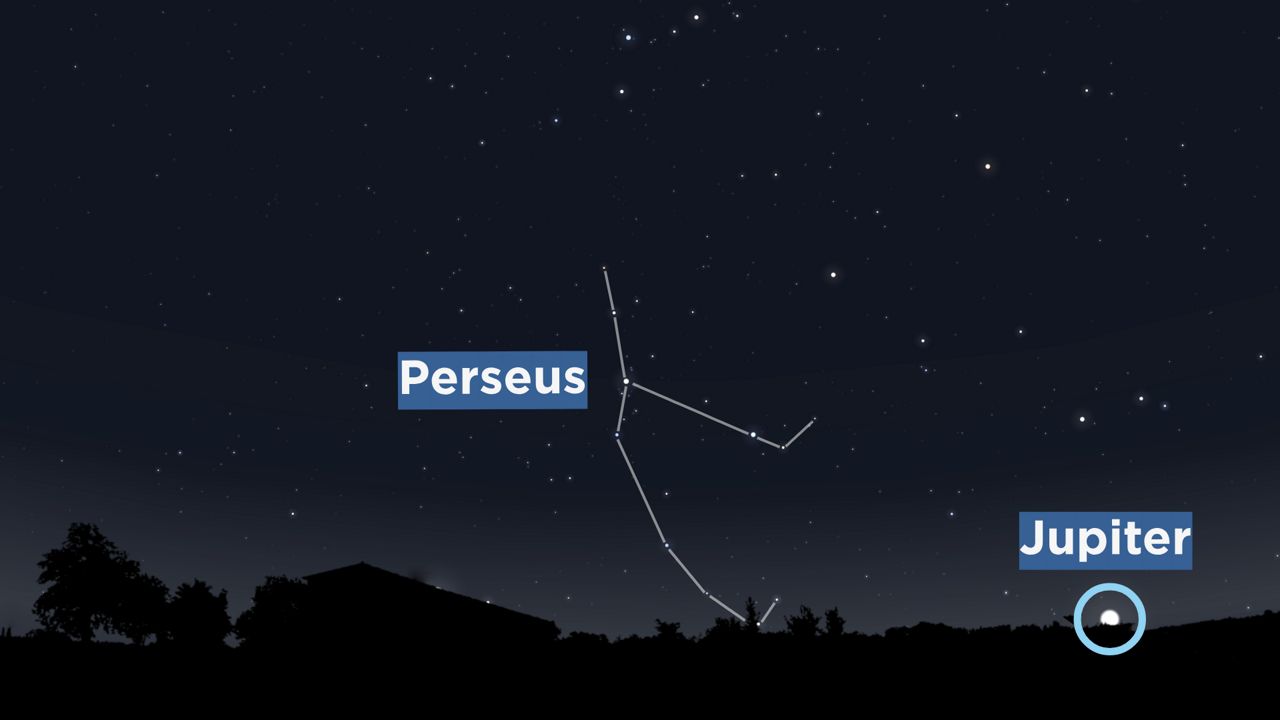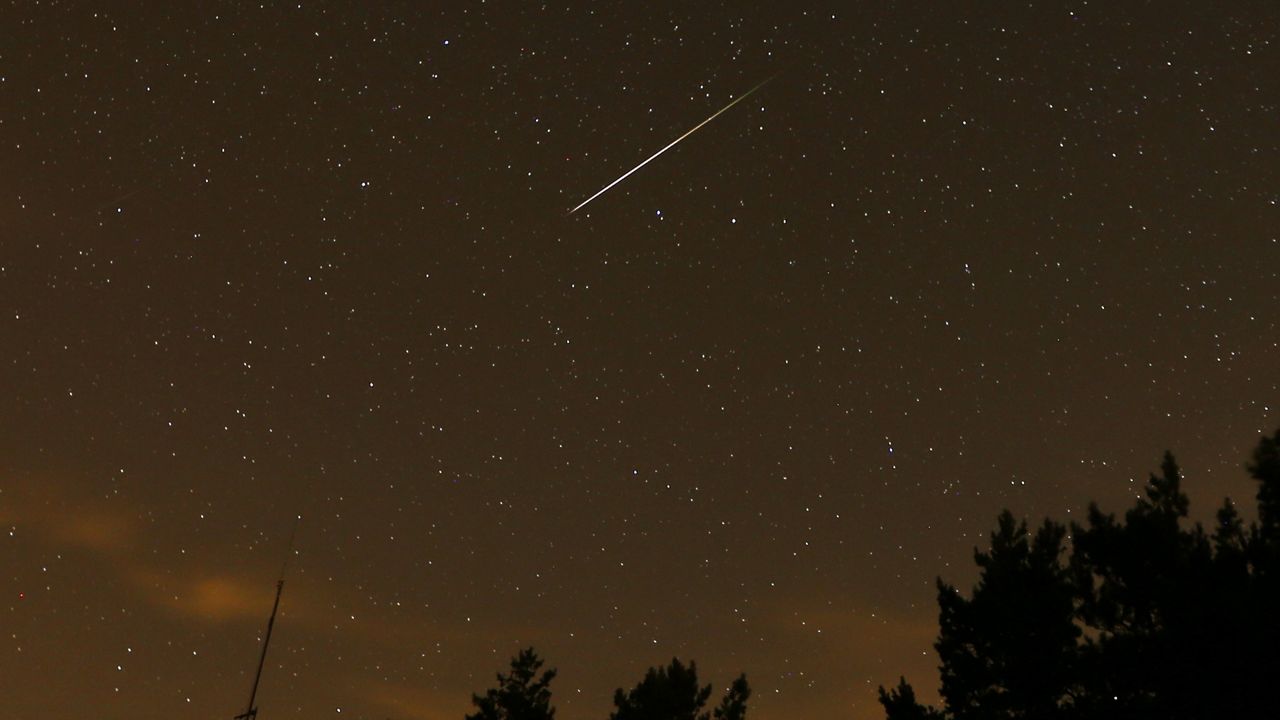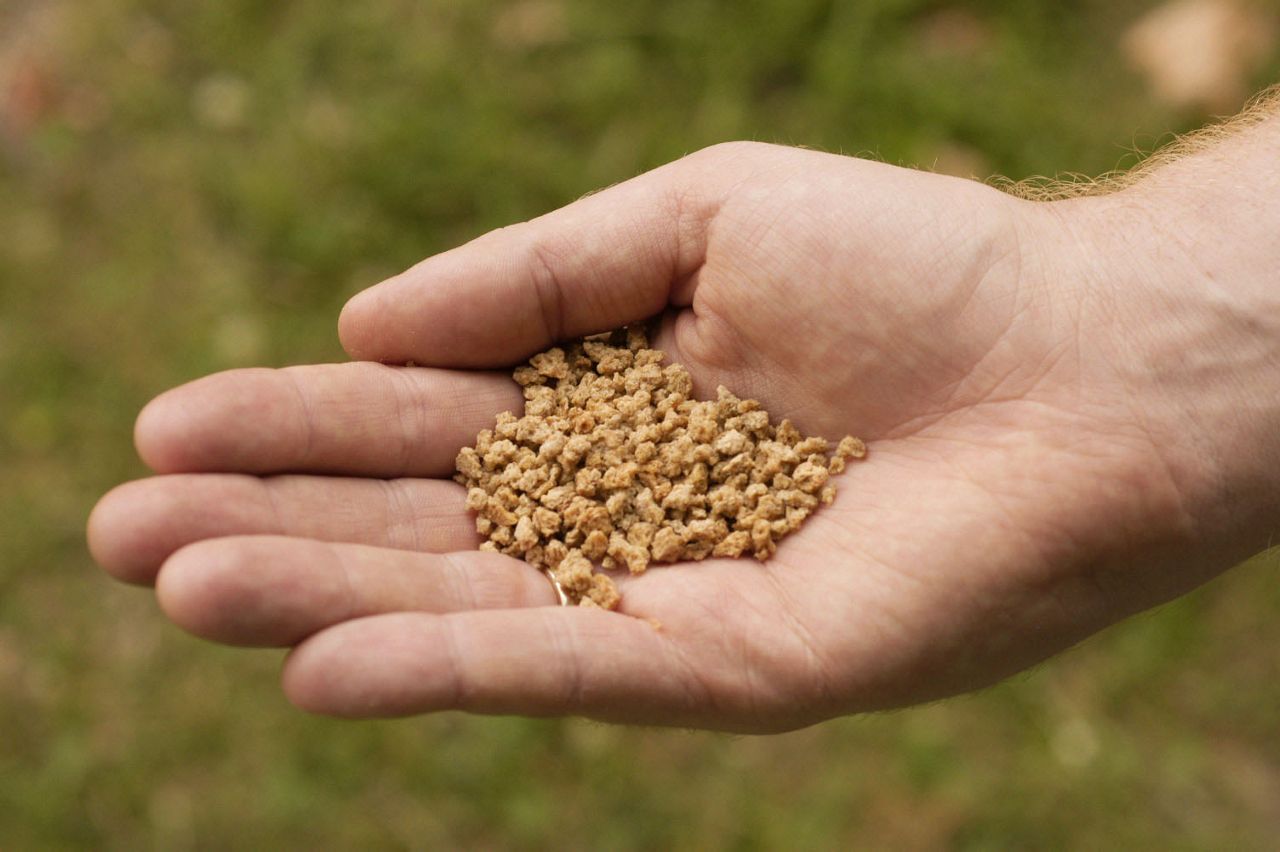One of the best meteor showers of the year peaks this weekend. And, unlike last year, we won’t have a full moon making the sky too bright.
The Perseid meteor shower peaks Saturday night into Sunday morning. While you can spot meteors zooming across the sky any time after dark, your best opportunity will be after midnight.
As the night goes on, the constellation Perseus–where the meteors appear to originate–will rise higher in the northeast sky. However, you can look anywhere overhead, not just in that direction.

Last year, the moon was full, washing out all but the brightest meteors. That’s not an issue this time. In ideal conditions, this show produces 50 to 100 meteors per hour, or about one or two every minute. Go find a dark place away from city lights and let your eyes adjust to the darkness for at least 15 minutes. That means putting your cellphone away, too.
The Perseids produce long, bright trails, making it one of the more visual annual showers.

We see the Perseids in the late summer as the Earth passes through the dust and debris that Comet Swift-Tuttle leaves behind. The “shooting stars” actually come from grains that are about the size of Grape Nuts, according to Sky & Telescope, that burn in the atmosphere as they zip by at over 130,000 miles per hour.

Hopefully clouds don’t get in your way! Check your local forecast here. But if clear skies aren’t in the cards Saturday night, don’t worry. That’s when they should be most active, but the Perseids don’t suddenly start and stop; you can try looking any time around the peak.
This isn’t the last meteor shower of the year. See the others coming up, along with other night sights, right here.
Our team of meteorologists dives deep into the science of weather and breaks down timely weather data and information. To view more weather and climate stories, check out our weather blogs section.



